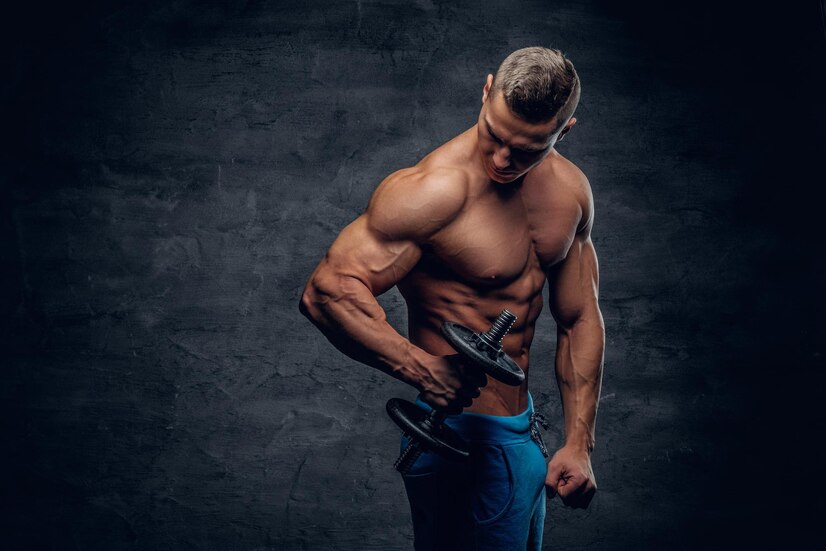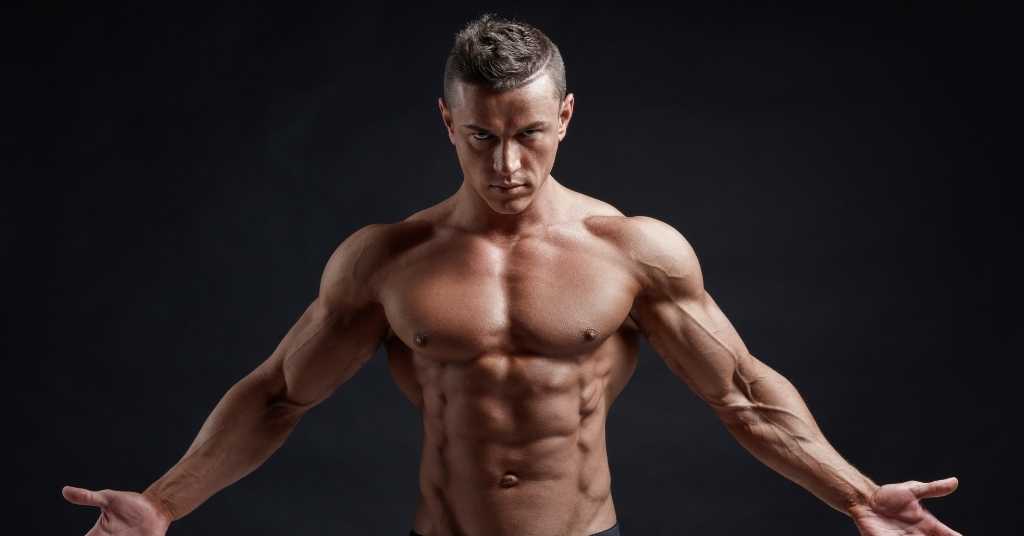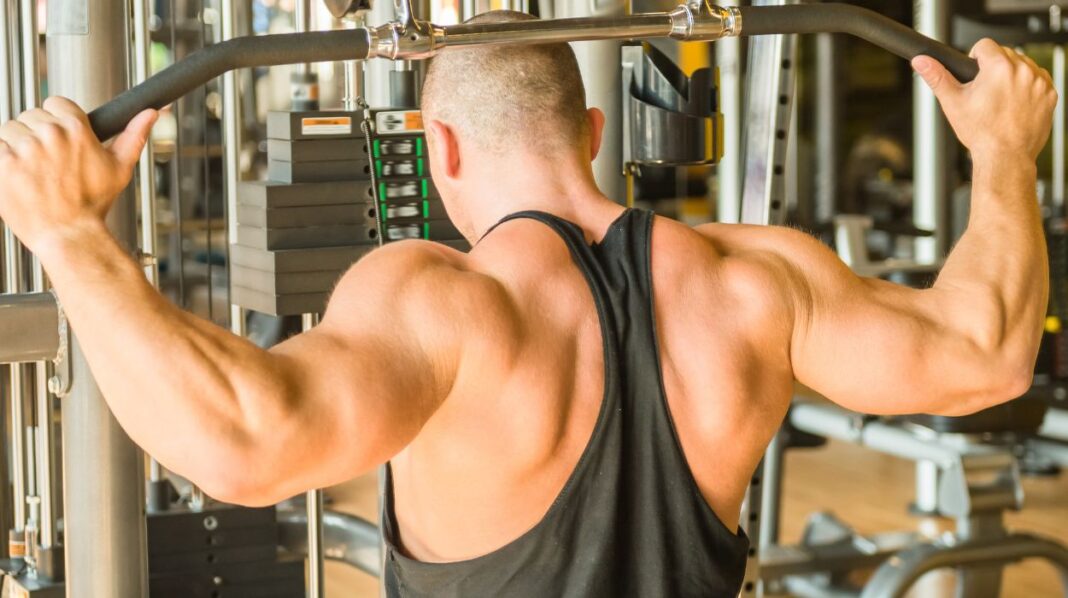The Complete Shoulder Training Guide: Build Size, Shape, and Strength
If you want to look powerful in a T-shirt, dominate your lifts, and build a physique that turns heads from every angle, you need shoulders that match your ambition.
Well-developed delts create width, roundness, and balance. They give you that 3D look—front to back, side to side—that screams strength and symmetry.
But here’s the reality:
Most lifters over-press, under-isolate, and ignore key muscle heads. The result? Rounded shoulders from the front, but flat or underdeveloped from the side and rear.
And if you’ve ever wondered why your shoulders look decent from one angle but not another… this is why.
This guide is your complete blueprint—how to train for maximum size, balance, and injury-proof strength, broken down head by head, with exact strategies, programming advice, and real-world bodybuilding insight.
Shoulder Anatomy: What You’re Really Training
Your shoulders aren’t just “one muscle” — they’re a three-headed muscle group with very different functions. Train them like one lump of meat and you’ll never maximize growth.
Anterior Deltoid (Front Delt)
- Primary Function: Shoulder flexion — think front raises and pressing movements.
- Already Worked By: Bench press, incline press, overhead pressing.
- Bodybuilder’s Note: Most lifters overtrain these without realizing. They’re not your weak link—save your volume for the other heads.
Lateral Deltoid (Side Delt)
- Primary Function: Shoulder abduction — moving your arm out to the side.
- Key Role: Creates width and that “cap” shape.
- Bodybuilder’s Note: This is your money muscle for a wide frame. For many lifters, this is where most isolation volume should go.
Posterior Deltoid (Rear Delt)
- Primary Function: Horizontal abduction and external rotation — pulling your arms back.
- Key Role: Posture, balance, and the “3D” look.
- Bodybuilder’s Note: If you’re not training these directly, they’re underdeveloped. Rows aren’t enough—add targeted work.
Core Movements for Mass and Shape
The smartest shoulder training programs combine big compounds for overall growth and laser-focused isolation for shape and symmetry.
Compound Lifts (Mass Builders)
These allow you to move heavy weight, recruit multiple heads, and build a base of strength.
- Overhead Press (Barbell or Dumbbell)
- Hits front and side delts
- Ideal for strength and thickness
- Dumbbells allow greater range and joint freedom
- Arnold Press
- Combines rotation with pressing
- Increases time under tension
- Forces full delt engagement
- Machine or Smith Overhead Press
- Stable path = more focus on delts, less on stabilizers
- Great for high-volume hypertrophy work
Isolation Staples (Shape Builders)
These movements are where you create detail, cap size, and balance between heads.
- Lateral Raise (Dumbbell, Cable, Machine)
- Best for side delts
- Cable version gives tension through entire ROM
- Rear Delt Fly (Dumbbell, Cable, Machine)
- Best for rear delts
- High reps work best for control and mind-muscle connection
- Front Raise (Optional)
- Direct front delt work
- Often unnecessary for most lifters due to pressing volume
Programming Guidelines for All Levels
You can train shoulders 1–2 times per week, depending on your split. Push days, upper body days, or dedicated shoulder days all work.
Volume Targets (per week)
| Delt Head | Sets/Week | Notes |
| Front | 6–8 | Most get enough from pressing |
| Side | 10–15 | Prioritize for width |
| Rear | 10–15 | Prioritize for balance/posture |
💡 Bodybuilder’s Tip: If you want a dramatic change in your shoulder look, shift 60–70% of your isolation work to side and rear delts.
Training Strategy by Goal
For Size (Hypertrophy)
- Prioritize side and rear delts
- Work in 10–15 rep ranges
- Slow tempo, controlled form
- Supersets work well here (e.g., lateral raises into rear delt flys)
For Strength
- Overhead press (barbell or dumbbell) in 4–8 rep range
- Track your top set and back-off volume
- Add pauses at sticking points to build lockout power
For Symmetry
- Use unilateral cable or dumbbell work
- Start with your weaker side
- Begin sessions with weak point training (e.g., rear delts first if they lag)
Common Shoulder Training Mistakes
- Overtraining Front Delts
- Pressing twice a week plus chest day is plenty
- Undertraining Rear Delts
- Leads to hunched posture and imbalanced look
- Going Too Heavy on Lateral Raises
- Turns into a shrug — lighter weights, cleaner form
- Ignoring Joint Health
- Warm up with rotator cuff work and light activation drills
- Neglecting Range of Motion
- Partial reps have their place, but most lifters shorten ROM too soon
Advanced Shoulder-Building Tactics
Once you’ve nailed the basics, these tweaks can push you past plateaus.
- Mechanical Drop Sets
Start with the hardest variation (e.g., seated lateral raise), then switch to an easier version (standing lateral raise) without rest.
- Constant Tension Sets
Instead of resting at the bottom, keep a slight bend and hover in the tension zone.
- Pre-Exhaust
Hit isolation work before compounds.
Example: Cable lateral raises → Overhead press. Forces delts to fail before triceps take over.
- Pause and Squeeze
On rear delt flys, pause for 1–2 seconds at peak contraction to eliminate momentum.
Sample Shoulder Workouts
Here are two bodybuilding-approved routines depending on your split.
Mass-Focused Shoulder Day
- Seated Dumbbell Overhead Press – 4 × 8–10
- Cable Lateral Raise – 4 × 12–15
- Rear Delt Fly (machine) – 3 × 15
- Arnold Press – 3 × 10
- Reverse Pec Deck – 2 × 20 (burnout)
Push Day Shoulder Block
- Barbell Overhead Press – 3 × 6–8
- Dumbbell Lateral Raise – 3 × 15
- Rear Delt Cable Cross – 3 × 12
Rear Delt Priority Session (for balance)
- Rear Delt Cable Fly – 4 × 15
- Arnold Press – 3 × 10–12
- Cable Lateral Raise – 3 × 15
- Face Pull – 3 × 12–15
Shoulder Warm-Up & Injury Prevention
Shoulders are highly mobile but vulnerable. Don’t skip prep work.
Quick Warm-Up Routine (5 min)
- Band pull-aparts × 20
- External rotations × 15 each arm
- Scapular wall slides × 10
- Light lateral raises × 15
Rotator Cuff Health Tips
- Include face pulls weekly
- Keep pressing volume in check
- Rotate grips and angles to avoid overuse
How to Fit Shoulder Training Into Your Program
If you run a push/pull/legs split:
- Train shoulders with chest/triceps (push day)
- Add extra side/rear delt work on pull day
If you run an upper/lower split:
- Include overhead press on upper days
- Alternate isolation focus between side and rear delts each session
If you run a bro split:
- Dedicate a full day to shoulders
- Start with compounds, then hammer isolation
Final Word: The 3D Shoulder Blueprint
If you want wide, round, and balanced shoulders, you need more than just heavy presses.
You need:
- Angles — Hit front, side, and rear delts deliberately
- Balance — Don’t let pressing volume overpower rear/side work
- Volume — Side and rear delts thrive on higher weekly sets
- Intensity — Train with intent, control, and precision
From the front, your shoulders should flow seamlessly into your chest and arms. From the side, they should stand tall and rounded. From the back, your rear delts should pop like armor plates.
Train smart, stay consistent, and earn the shoulders that command attention in and out of the gym.
🔗 Related Articles:
- Best Shoulder Exercises Ranked by Head
- How to Grow Side Delts for 3D Shoulders
- Rear Delt Training That Actually Works
- Overhead Press Mastery
- Fixing Common Shoulder Training Mistakes





